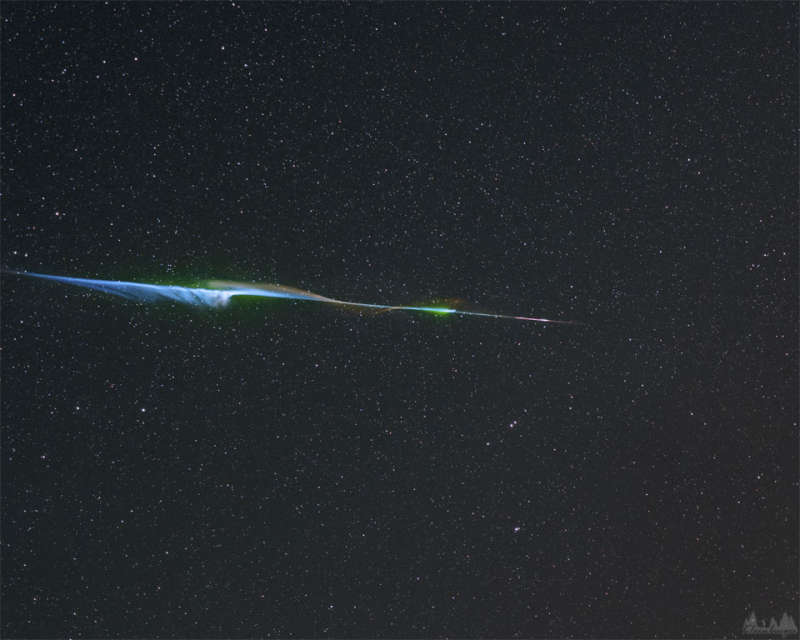 |
Астронет: Астрономическая картинка дня Свечение химических элементов при разрушении метеора http://variable-stars.ru/db/msg/1905495/eng |
Credit & Copyright: Michael Kleinburger
Explanation:
Meteors can be colorful.
While the human
eye usually cannot discern many colors, cameras often can.
Pictured here is a
fireball, a disintegrating meteor
that was not only one of the brightest the photographer has
ever seen,
but colorful.
The meteor was captured by chance in mid-July with a camera set up on
Hochkar Mountain in
Austria
to photograph the central band of our
Milky Way galaxy.
The
radiant grit, likely
cast off by a comet
or asteroid long ago, had the misfortune to enter
Earth's atmosphere.
Colors in meteors usually originate from ionized chemical elements released
as the
meteor disintegrates, with blue-green typically originating from
magnesium,
calcium
radiating violet, and
nickel glowing green.
Red, however, typically originates from energized
nitrogen and
oxygen in the Earth's atmosphere.
This bright
meteoric
fireball
was gone in a flash -- less than a second -- but it left a
wind-blown ionization trail that
remained visible for almost a minute.
Authors & editors:
Robert Nemiroff
(MTU) &
Jerry Bonnell
(USRA)
NASA Web Site Statements, Warnings,
and Disclaimers
NASA Official: Jay Norris.
Specific
rights apply.
A service of:
LHEA at
NASA /
GSFC
& Michigan Tech. U.
